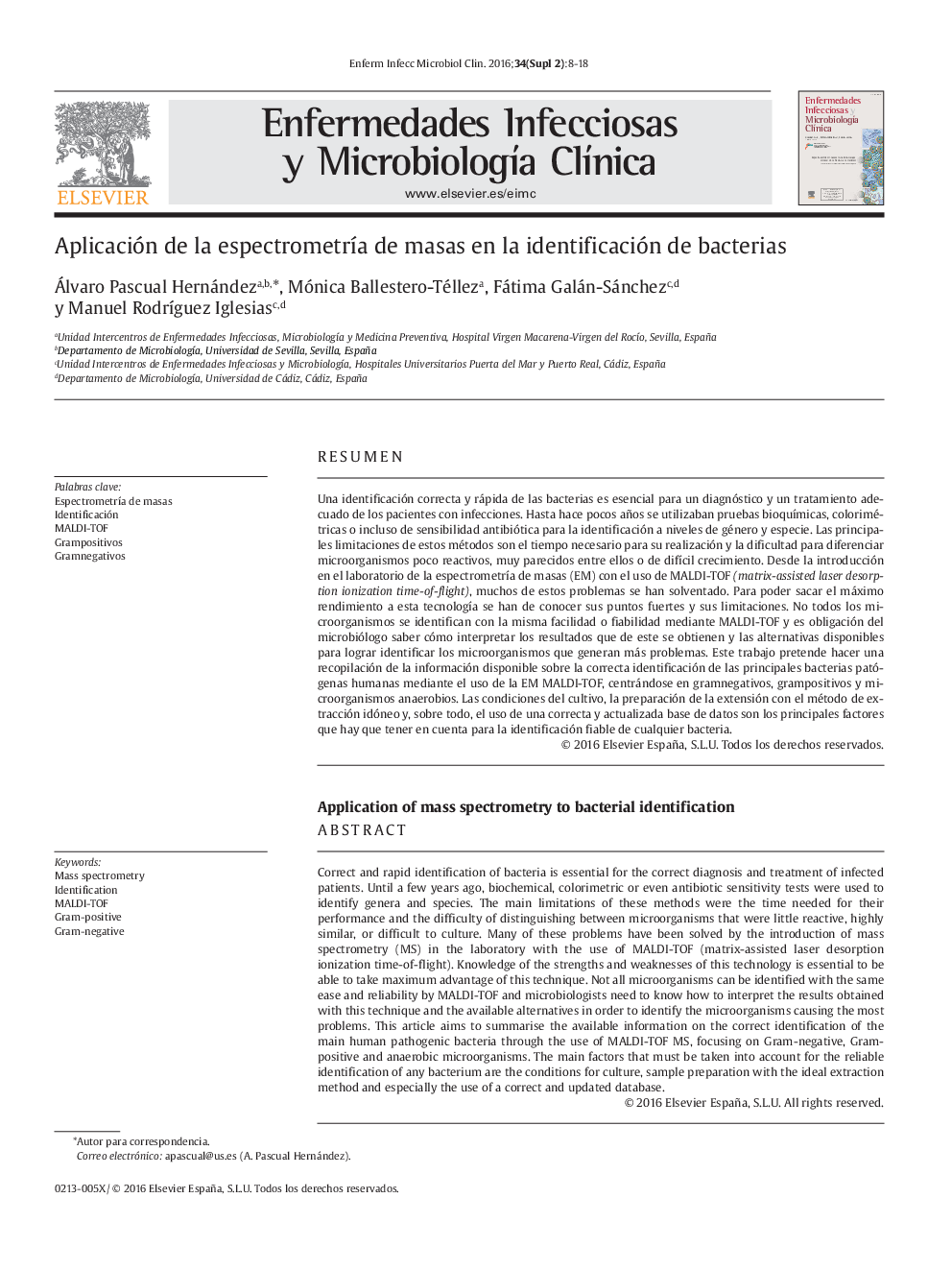| کد مقاله | کد نشریه | سال انتشار | مقاله انگلیسی | نسخه تمام متن |
|---|---|---|---|---|
| 3400577 | 1222618 | 2016 | 11 صفحه PDF | دانلود رایگان |
ResumenUna identificación correcta y rápida de las bacterias es esencial para un diagnóstico y un tratamiento adecuado de los pacientes con infecciones. Hasta hace pocos años se utilizaban pruebas bioquímicas, colorimé- tricas o incluso de sensibilidad antibiótica para la identificación a niveles de género y especie. Las principales limitaciones de estos métodos son el tiempo necesario para su realización y la dificultad para diferenciar microorganismos poco reactivos, muy parecidos entre ellos o de difícil crecimiento. Desde la introducción en el laboratorio de la espectrometría de masas (EM) con el uso de MALDI-TOF (matrix-assisted laser desorption ionization time-of-flight), muchos de estos problemas se han solventado. Para poder sacar el máximo rendimiento a esta tecnología se han de conocer sus puntos fuertes y sus limitaciones. No todos los microorganismos se identifican con la misma facilidad o fiabilidad mediante MALDI-TOF y es obligación del microbiólogo saber cómo interpretar los resultados que de este se obtienen y las alternativas disponibles para lograr identificar los microorganismos que generan más problemas. Este trabajo pretende hacer una recopilación de la información disponible sobre la correcta identificación de las principales bacterias patógenas humanas mediante el uso de la EM MALDI-TOF, centrándose en gramnegativos, grampositivos y microorganismos anaerobios. Las condiciones del cultivo, la preparación de la extensión con el método de extracción idóneo y, sobre todo, el uso de una correcta y actualizada base de datos son los principales factores que hay que tener en cuenta para la identificación fiable de cualquier bacteria.
Correct and rapid identification of bacteria is essential for the correct diagnosis and treatment of infected patients. Until a few years ago, biochemical, colorimetric or even antibiotic sensitivity tests were used to identify genera and species. The main limitations of these methods were the time needed for their performance and the difficulty of distinguishing between microorganisms that were little reactive, highly similar, or difficult to culture. Many of these problems have been solved by the introduction of mass spectrometry (MS) in the laboratory with the use of MALDI-TOF (matrix-assisted laser desorption ionization time-of-flight). Knowledge of the strengths and weaknesses of this technology is essential to be able to take maximum advantage of this technique. Not all microorganisms can be identified with the same ease and reliability by MALDI-TOF and microbiologists need to know how to interpret the results obtained with this technique and the available alternatives in order to identify the microorganisms causing the most problems. This article aims to summarise the available information on the correct identification of the main human pathogenic bacteria through the use of MALDI-TOF MS, focusing on Gram-negative, Grampositive and anaerobic microorganisms. The main factors that must be taken into account for the reliable identification of any bacterium are the conditions for culture, sample preparation with the ideal extraction method and especially the use of a correct and updated database.
Journal: Enfermedades Infecciosas y Microbiología Clínica - Volume 34, Supplement 2, June 2016, Pages 8–18
